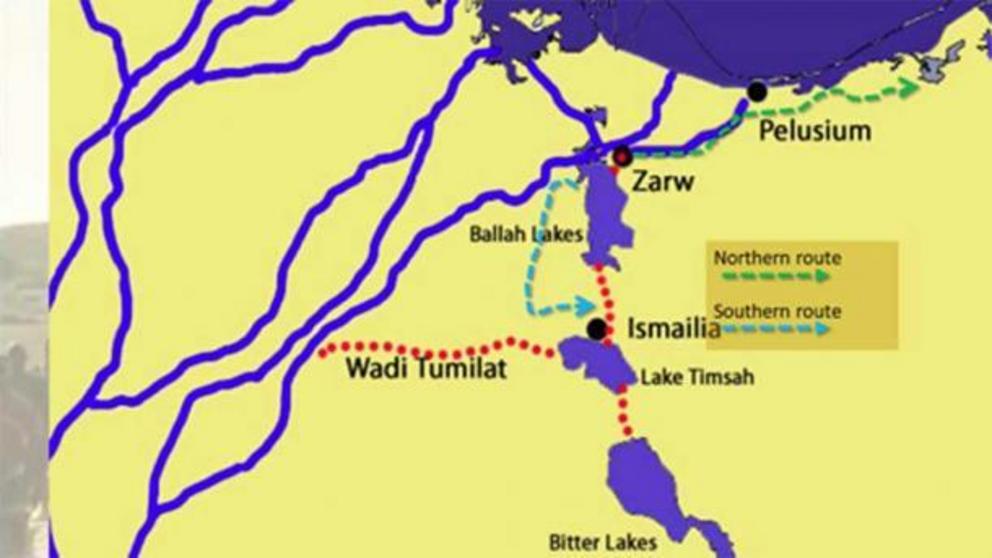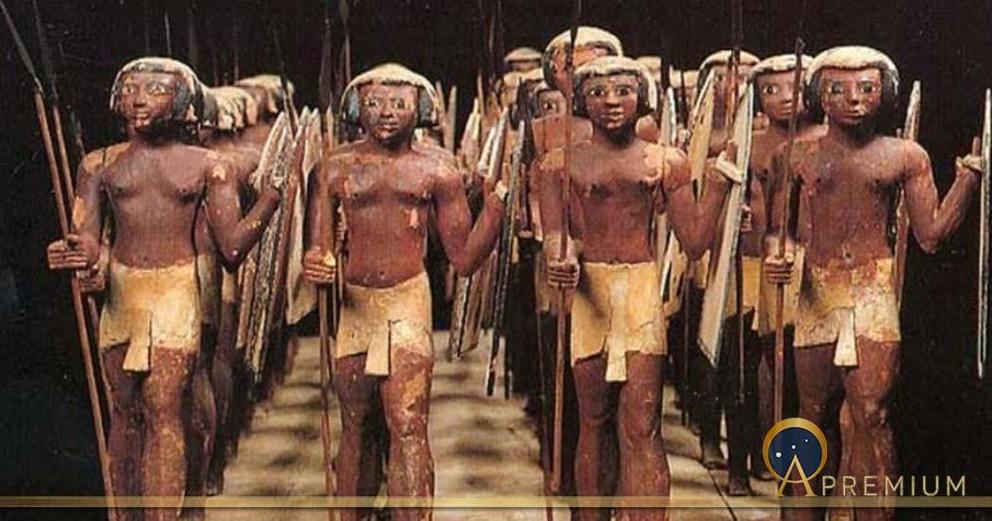Defensive fortresses along the way of Horus in Ancient Egypt
Top Image : Statuettes représentants des soldats de l'armée en Égypte ancienne
The rich fertile lands of Egypt’s Nile Delta must have been looked on with avaricious eyes from their next-door neighbors to the east. All that lush greenery lay in stark contrast to the deserts of the Sinai and beyond. The Northern Sinai coastline was the land bridge that joined Egypt and the rest of Africa with the Middle East and beyond into Asia. The natural gateway to all that Egypt had to offer. With no real natural barriers, the need for solid defensive structures on the eastern approaches to the Delta was crucial. Here lies the Way of Horus, the Wall of the Ruler/Prince, and the fortress of Zarw. This need for defense was understood as far back as the early Fifth Dynasty, as shown by the title ‘Overseer of the Way of Horus’ found in the tomb of Hekni-Khnwm, discovered just to the south of the causeway between the Cult Temple and the Valley Temple at Giza.
 The Eastern Frontier showing the Way Of Horus (green), from Zarw
The Eastern Frontier showing the Way Of Horus (green), from Zarw
The Way Of Horus
The Way of Horus is the ancient military road that leads from the eastern Delta, following the old Mediterranean coastline, to somewhere near the current Israeli border. It is believed to be the same route as the Way of the Philistines mentioned in Exodus in The Bible . The pyramid texts of the Sixth Dynasty King Teti also mention the Way of Horus. It turns up again in the First Intermediate Period in the Instruction to Merikare , a series of policy decisions made supposedly from an aging king to his heir: “For the mooring-post is staked in the district I made in the East from Hebenu to Horusway ”.
 A raised-relief depiction of Amenemhat I accompanied by deities; the death of Amenemhat I is reported by his son Senusret I in the Story of Sinuhe.
A raised-relief depiction of Amenemhat I accompanied by deities; the death of Amenemhat I is reported by his son Senusret I in the Story of Sinuhe.
The 12th Dynasty Tale of Sinuhe follows the adventures of a court official, Sinuhe, who, upon hearing of the death of King Amenemhat I, flees Egypt for Upper Retenu and only returns to his homeland as an old man. Although considered by many as a work of fiction, the story draws on real geographical locations and mentions both the Wall of the Ruler as well as the Way of Horus.
For the rest of this article please go to source link below.

